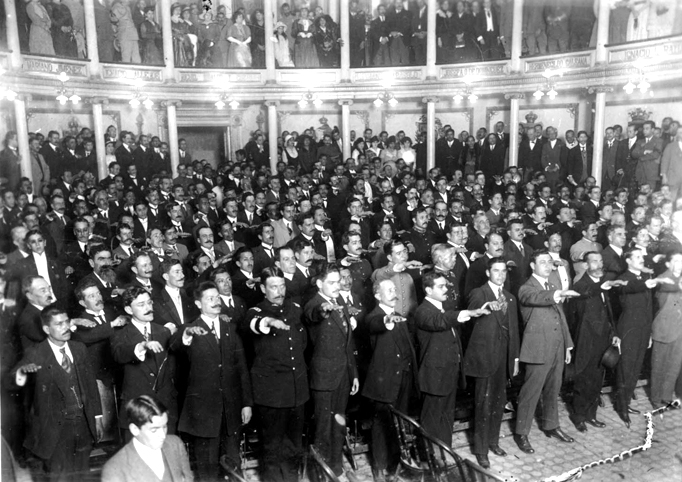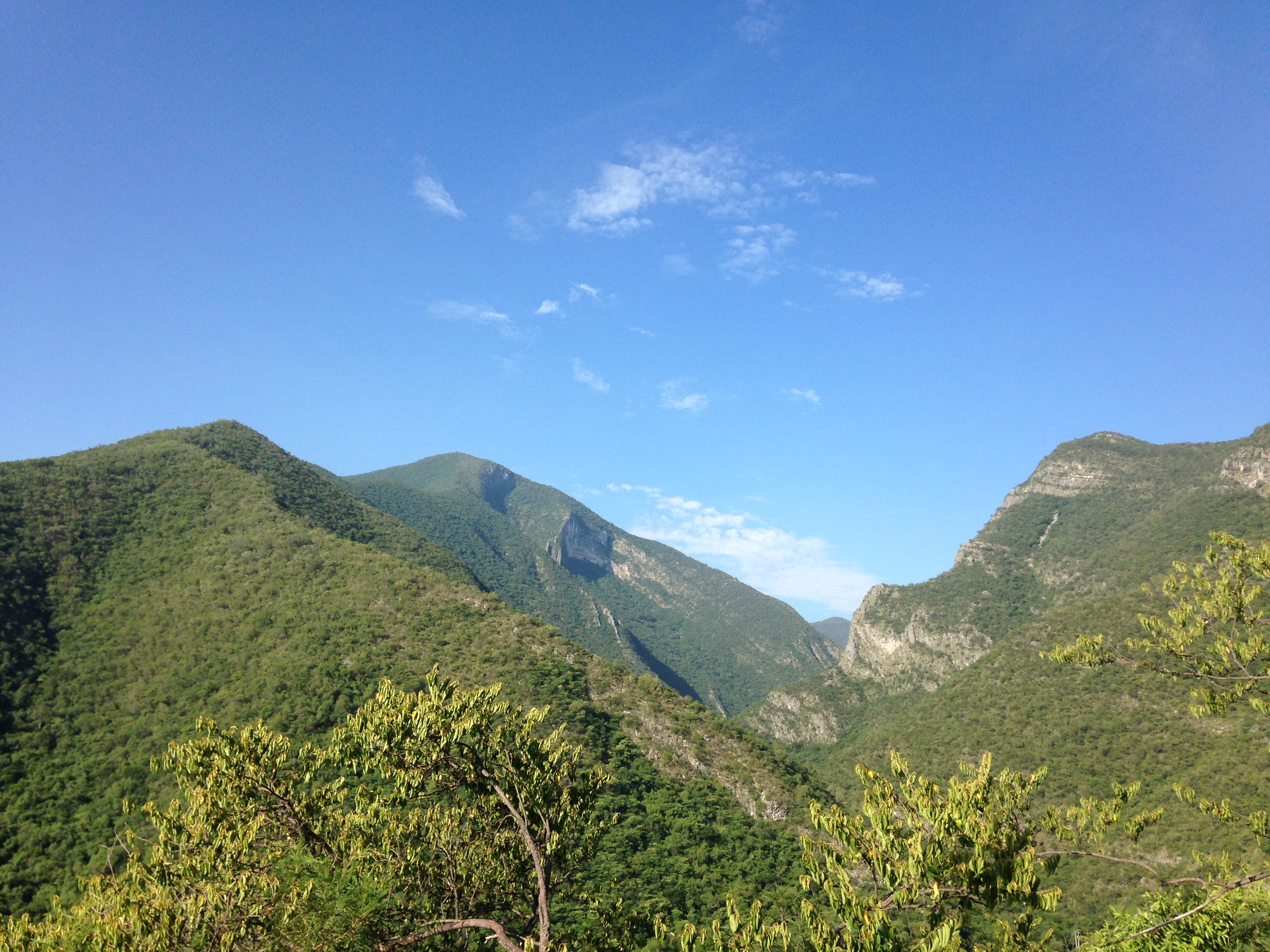|
Melchor Múzquiz
José Ventura Melchor Ciriaco de Ecay-Múzquiz y Arrieta (6 April 1788 – 14 December 1844) was a Mexican soldier and politician who became the 5th President of Mexico after president Anastasio Bustamante stepped down to personally lead his armies against an 1832 insurgency known as the Plan of Veracruz. Múzquiz played an active role in attempting to suppress the revolt, but revolution would succeed and Múzquiz was forced to step down in December 1832 in favor of the insurgents' choice for president: Manuel Gomez Pedraza. Early life Melchor Múzquiz was born in Santa Rosa, Coahuila in 1790 and began his studies at the college of San Ildefono in Mexico City from which he left to join the insurgents when the Mexican War of Independence broke out in 1810. He fought against the Spanish in Michoacán and Veracruz and was taken prisoner at the Hacienda of Monte Blanco at the time when he had reached the rank of colonel. He was transported to Puebla and was at the point o ... [...More Info...] [...Related Items...] OR: [Wikipedia] [Google] [Baidu] |
Santa Rosa De Múzquiz
Melchor Múzquiz (also: Ciudad Melchor Múzquiz, Ciudad Múzquiz, or simply Múzquiz) is a city and seat of the municipality of Múzquiz, in the north-eastern Mexican state of Coahuila. The city is named for Melchor Múzquiz, President of the Republic in 1832, born in Santa Rosa in 1790. History The city was founded on 26 September 1735 by the viceroy Juan Antonio de Vizarrón y Eguiarreta as a Spanish garrison in order to protect them from the constant native attacks. The name of the settlement was firstly called Santa Rosa María del Sacramento, name that was approved by the viceroy on 29 August 1737. On 6 February 1850, the settlement's name was abolished and it was renamed to Villa de Múzquiz, honoring the interim President Melchor Múzquiz. On March 9 1925, Villa de Múzquiz was declared a city and its name changed to the current Melchor Múzquiz. Her "ciudades amigas" was established with Denton, Texas in 2015. Múzquiz was declared part of the "Pueblos Mágicos ... [...More Info...] [...Related Items...] OR: [Wikipedia] [Google] [Baidu] |
Mexican People
Mexicans () are the citizens and nationals of the Mexico, United Mexican States. The Mexican people have varied origins with the most spoken language being Spanish language, Spanish, but many also speak languages from 68 different Languages of Mexico, Indigenous linguistic groups and other languages brought to Mexico by expatriates or recent immigration. In 2020, 19.4% of Mexico's population identified as Indigenous peoples of Mexico, Indigenous. There are currently about 12 million Mexican nationals residing outside Mexico, with about 11.7 million living in the United States. The larger Mexican diaspora can also include individuals that trace ancestry to Mexico and self-concept, self-identify as Mexican but are not necessarily Mexican citizenship, Mexican by citizenship. The United States has the largest Mexican population in the world after Mexico at 10,918,205 in 2021. The modern nation of Mexico achieved independence from the Spanish Empire in 1821, after a decade-long war ... [...More Info...] [...Related Items...] OR: [Wikipedia] [Google] [Baidu] |
Tabasco
Tabasco, officially the Free and Sovereign State of Tabasco, is one of the Political divisions of Mexico, 32 Federal Entities of Mexico. It is divided into Municipalities of Tabasco, 17 municipalities and its capital city is Villahermosa. It is located in southeast Mexico and is bordered by the states of Campeche to the northeast, Veracruz to the west, and Chiapas to the south and the Petén Department, Petén department of Guatemala to the southeast. It has a coastline to the north with the Gulf of Mexico. Most of the state is covered in rainforest as, unlike most other areas of Mexico, it has plentiful rainfall year-round. The state is also home to La Venta, the major site of the Olmecs, Olmec civilization, considered to be the origin of later Mesoamerican cultures. It produces significant quantities of petroleum and natural gas. Geography The state is located in the southeast of Mexico, bordering the states of Campeche, Chiapas, and Veracruz, with the Gulf of Mexico to the n ... [...More Info...] [...Related Items...] OR: [Wikipedia] [Google] [Baidu] |
Chihuahua (state)
Chihuahua, officially the Free and Sovereign State of Chihuahua, is one of the 31 states which, along with Mexico City, comprise the Political divisions of Mexico, 32 federal entities of Mexico. It is located in the northwestern part of Mexico and is bordered by the states of Sonora to the west, Sinaloa to the southwest, Durango to the south, and Coahuila to the east. To the north and northeast, it shares an extensive U.S.–Mexico border, border with the U.S. adjacent to the U.S. states of New Mexico and Texas. The state was named after its capital city, Chihuahua City; the largest city is Ciudad Juárez. In 1864 the city of Chihuahua was declared capital of Mexico by Benito Juárez, Benito Juarez during the Reform War and French intervention. The city of Parral, Chihuahua, Parral was the largest producer of silver in the world in 1640. During the Mexican War of Independence, Miguel Hidalgo y Costilla, Miguel Hidalgo was executed on July 30, 1811, in Chihuahua city. Although C ... [...More Info...] [...Related Items...] OR: [Wikipedia] [Google] [Baidu] |
Tampico
Tampico is a city and port in the southeastern part of the Mexican state of Tamaulipas. It is located on the north bank of the Pánuco River, about inland from the Gulf of Mexico, and directly north of the state of Veracruz. Tampico is the fifth-largest city in Tamaulipas, with a population of 314,418 in the city proper and 929,174 in the metropolitan area. During the period of Mexico's first oil boom in the early 20th century, the city was the "chief oil-exporting port of the Americas" and the second-busiest in the world, yielding great profits that were invested in the city's famous architecture, often compared to that of Venice and New Orleans.Dave Graham, "Crime-ridden state poses acid test for Mexican oil reform" ''Reuters,'' 25 June 2014, acces ... [...More Info...] [...Related Items...] OR: [Wikipedia] [Google] [Baidu] |
Manuel De Mier Y Terán
José Manuel Rafael Simeón de Mier y Terán (February 18, 1789 — July 3, 1832), generally known as Manuel de Mier y Terán, was a noted military and political figure during the Mexican War of Independence and during the era of the First Republic serving in the Mexican congress and as Minister of War. He made an inspection of Texas on behalf of the government and was placed in charge of securing the area after the Mexican government banned further American immigration in 1830. He was at one point considered a potential candidate for the Mexican presidency. However, health problems and despair over the nation's political situation drove him to commit suicide in 1832 during a revolution against the government of Anastasio Bustamante. Early career Mier y Terán studied at Mexico City's School of Mines before the outbreak of the insurgency for independence in 1810. He joined the insurgents in 1812 and rose to a leadership position. He was one of the few American-born Spaniards ... [...More Info...] [...Related Items...] OR: [Wikipedia] [Google] [Baidu] |
Tamaulipas
Tamaulipas, officially the Free and Sovereign State of Tamaulipas, is a state in Mexico; one of the 31 states which, along with Mexico City, comprise the 32 federal entities of Mexico. It is divided into 43 municipalities. It is located in northeast Mexico and is bordered by the states of Nuevo León to the west, San Luis Potosí to the southwest, and Veracruz to the southeast. To the north, it has a stretch of the U.S.–Mexico border with the state of Texas, and to the east it is bordered by the Gulf of Mexico. In addition to the capital city, Ciudad Victoria, the state's largest cities include Reynosa, Matamoros, Nuevo Laredo, Tampico, and Mante. Etymology The name Tamaulipas is derived from ''Tamaholipa'', a Huastec term in which the ''tam-'' prefix signifies "place (where)". No scholarly agreement exists on the meaning of ''holipa'', but "high hills" is a common interpretation. Another explanation of the state name is that it is derived from ''Ta ma ho'lipam ... [...More Info...] [...Related Items...] OR: [Wikipedia] [Google] [Baidu] |
Antonio López De Santa Anna
Antonio de Padua María Severino López de Santa Anna y Pérez de Lebrón (21 February 1794 – 21 June 1876),Callcott, Wilfred H., "Santa Anna, Antonio Lopez De,''Handbook of Texas Online'' Retrieved 18 April 2017. often known as Santa Anna, was a Mexican general, politician, and ''caudillo'' who served as the 8th president of Mexico on multiple occasions between 1833 and 1855. He also served as List of vice presidents of Mexico, vice president of Mexico from 1837 to 1839. He was a controversial and pivotal figure in Mexican politics during the 19th century, to the point that he has been called an "uncrowned monarch", and historians often refer to the three decades after Mexican independence as the "Age of Santa Anna". Santa Anna was in charge of the garrison at Veracruz at the time Mexican War of Independence, Mexico won independence in 1821. He would go on to play a notable role in the fall of the First Mexican Empire, the fall of the First Mexican Republic, the promulgation o ... [...More Info...] [...Related Items...] OR: [Wikipedia] [Google] [Baidu] |


